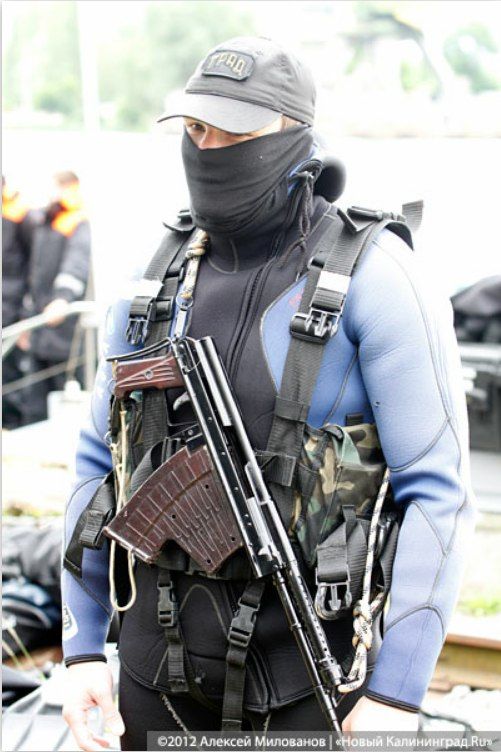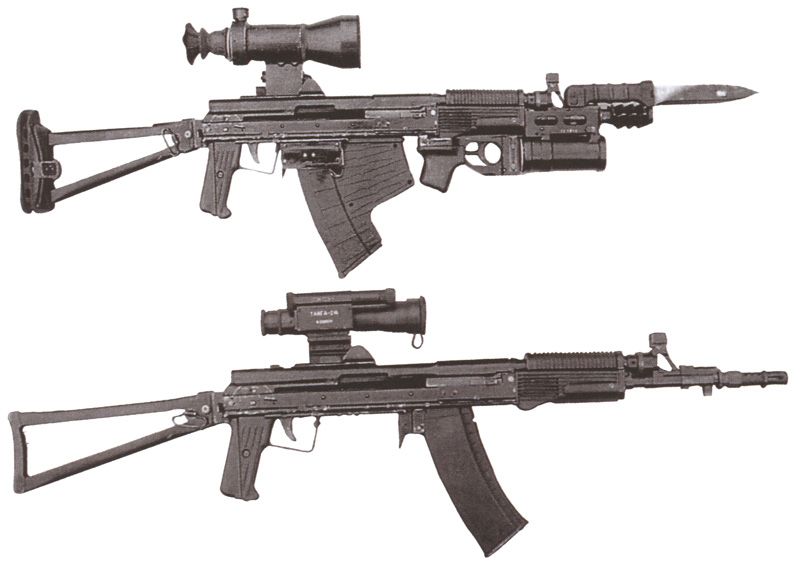At Reaper Feed, we’re big fans of interesting, unique, and bizarre weapons. When it comes to the creation of epic battlefield technology, the Russian’s are definitely in the lead. From fully automatic 50. caliber handheld machine guns to the enormous ground effect aircraft that was given the infamous name of the Caspian Sea Monster, the Russians certainly know a thing or two about wild weapons. Today we’ll be looking at an often overlooked piece of the arsenal of the Soviet Union: the APS underwater assault rifle.

A common question gun novices often ask is: ‘do guns work underwater?’ The Soviets answered this question with a resounding ‘Da’. Back in the Cold War, the rising threat of attacks by Western frogmen in naval bases caused various anti-frogman techniques to be developed, and in the USSR one of these was guard frogmen sent to stop the attackers. At first, these guard frogmen were armed only with knives and AK-type rifles. The rifle was carried in a waterproof case and could be used only on the surface, so the only effective underwater weapon against enemy frogmen was the knife. That was until the APS rifle came along.
Designed by the Soviets in the 1970s and known as the Avtomat Podvodny Spetsialnyy in Russian or the Special Underwater Assault Rifle in English, the APS was produced by the Tula Arms Plant.
Underwater, ordinary bullets are inaccurate and have a very short range. The APS fires a 120 mm (4.75 in) long 5.66 mm caliber steel bolt specially designed for this weapon. Its magazine holds 26 rounds. The APS’s barrel is not rifled; the fired projectile is kept in line by hydrodynamic effects; as a result, the APS is somewhat inaccurate when fired out of water. However, in its natural habitat under the waves, the APS can unleash a fairly impressive 500 rounds per minute.
The APS has a longer range and more penetrating power than spearguns. This is useful in such situations such as shooting an opposing diver through a reinforced dry suit, a protective helmet (whether air-holding or not), thick tough parts of breathing sets and their harnesses, and the plastic casings and transparent covers of some small underwater vehicles.

The APS is more powerful than a pistol, but is bulkier and takes longer to aim, particularly swinging its long barrel and large flat magazine sideways through the water.
It soon became a primary weapon of Soviet frogmen and Serbian river flotilla frogmen. In the decades since its invention, it has also been used by a variety of other armed forces from Cuba to Vietnam.
After the annexation of Crimea in 2014 and subsequent proxy war in the Donbass region of Ukraine, relations between Russia and the West deteriorated. A NATO military build-up on Russia’s borders led to a tense situation in the strategically vital region of the Baltic countries which all hug the Baltic Sea. Russia has two enormous naval bases in the Baltics, one in the isolated exclave of Kaliningrad and one in the Leningrad region. As a result, Russia renewed its focus on the APS Rifle in preparation for the defense of their Baltic Fleet from any possible adversaries.
Below is an epic video of Russian Naval troops practising with their APS rifles in, where else but the Baltic Sea of course!
To keep up with the competition and following an increased threat from al-Qaeda militants planning on attacking US Navy ships from underwater, the US military also recently ventured into the realm of underwater guns and has since developed weapons systems featuring underwater grenades as their own version of the ADS amphibious rifle.
The APS underwater assault rifle is one I’d personally love to try out and see how it would fare in a few drills such as the THOT Vaccine drill.
If you enjoyed this article, be sure to check out our weapons and tech department which covers battlefield technology from around the world both past and present.

![Russian special ops oeprator with APS underwater rifle [OS][1200x800]](https://reaperfeed.com/wp-content/uploads/2020/04/Russian-special-ops-oeprator-with-APS-underwater-rifle-OS1200x800.jpg)



